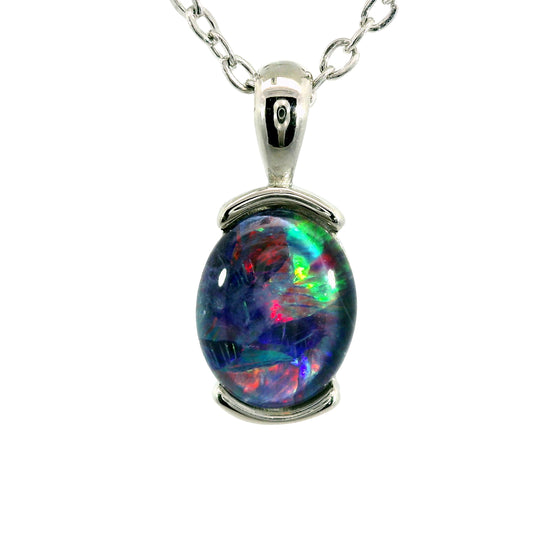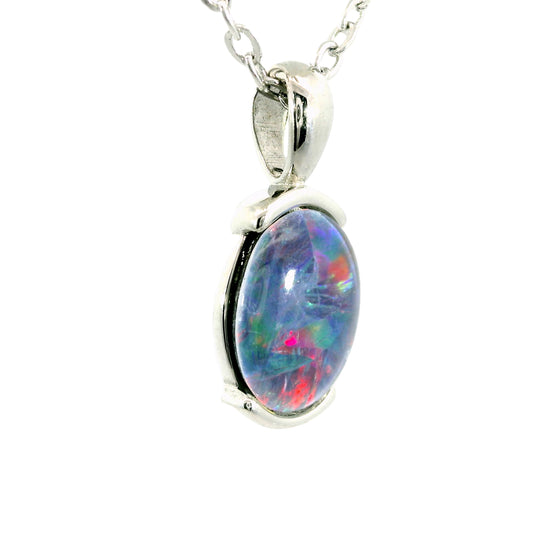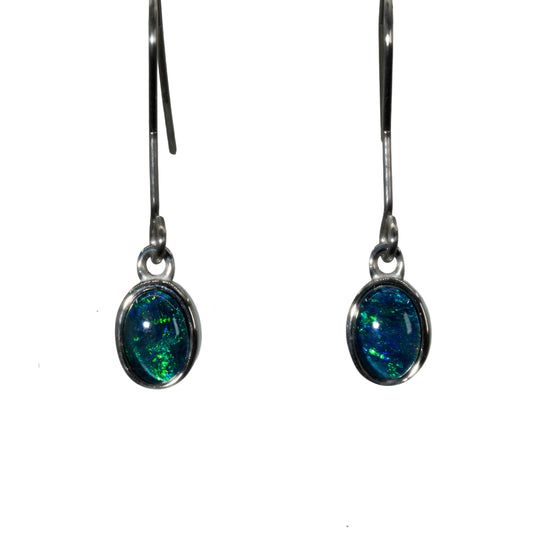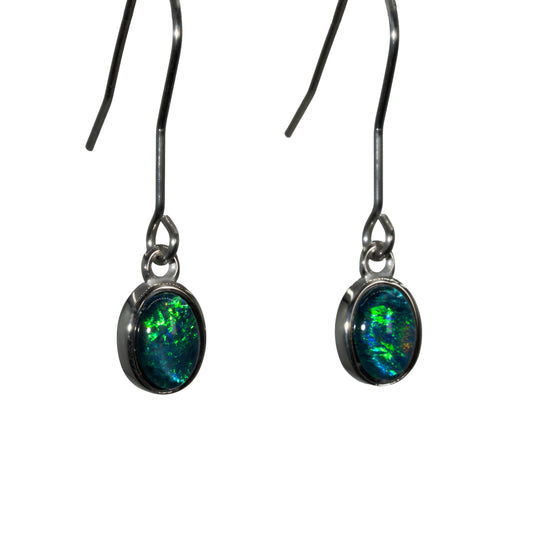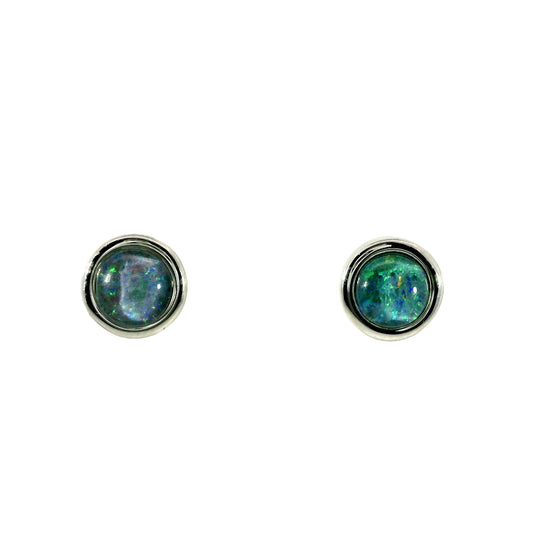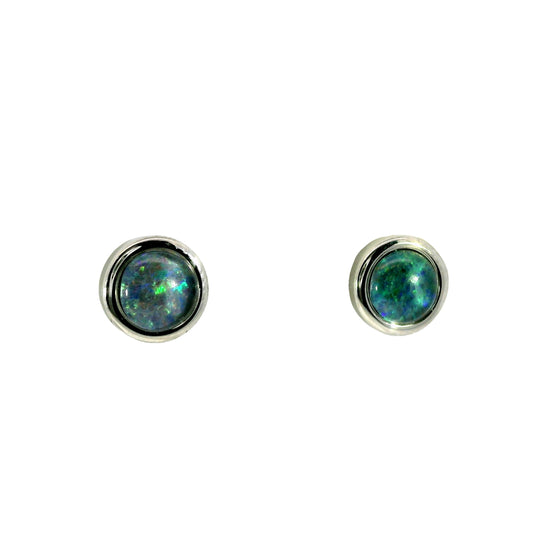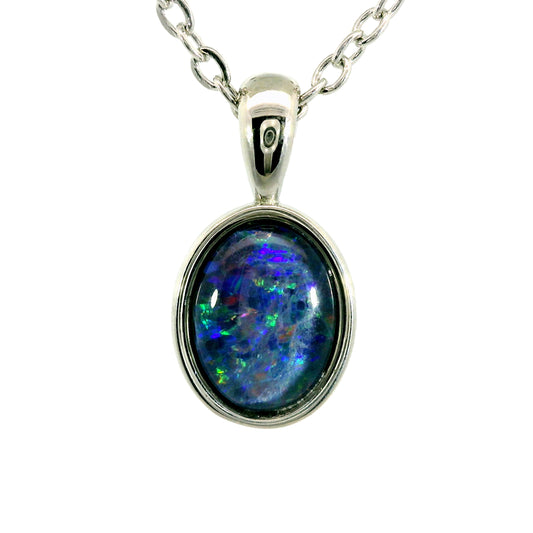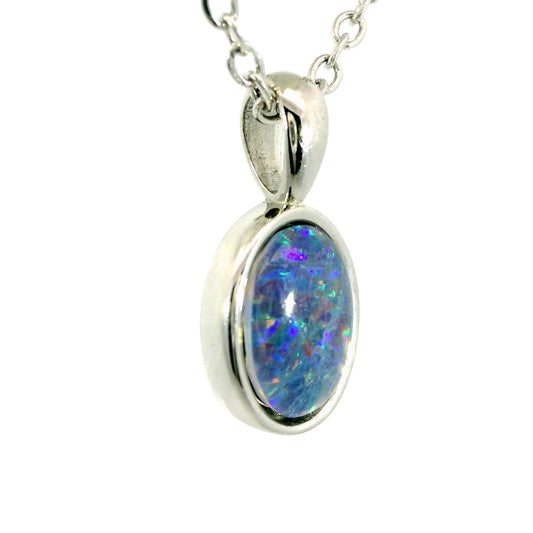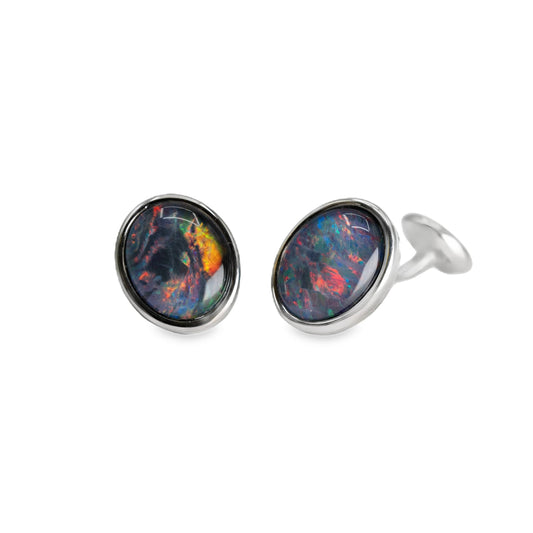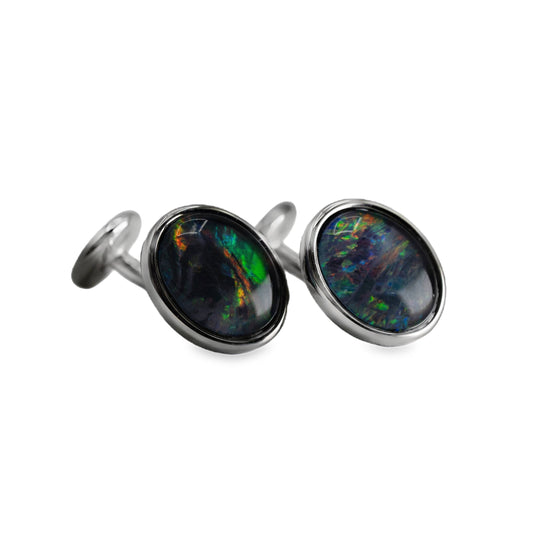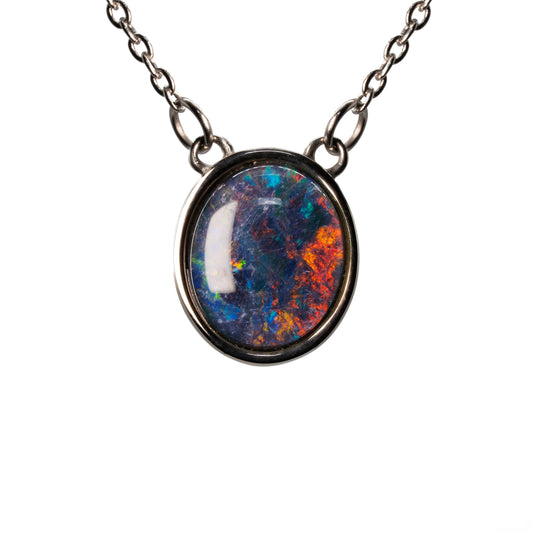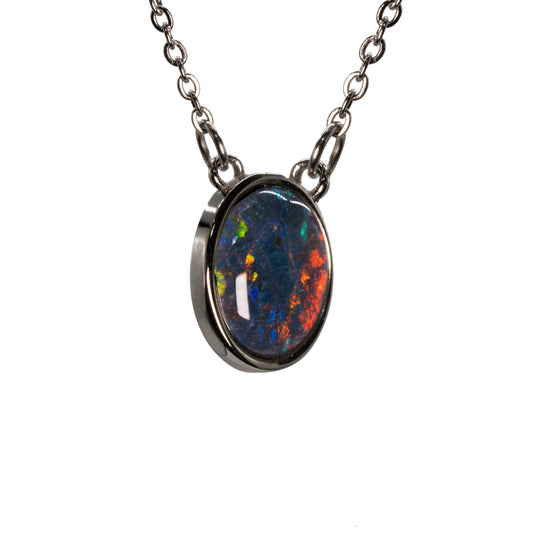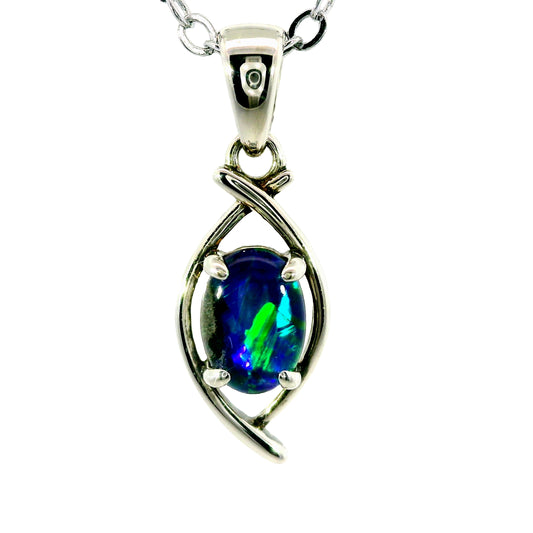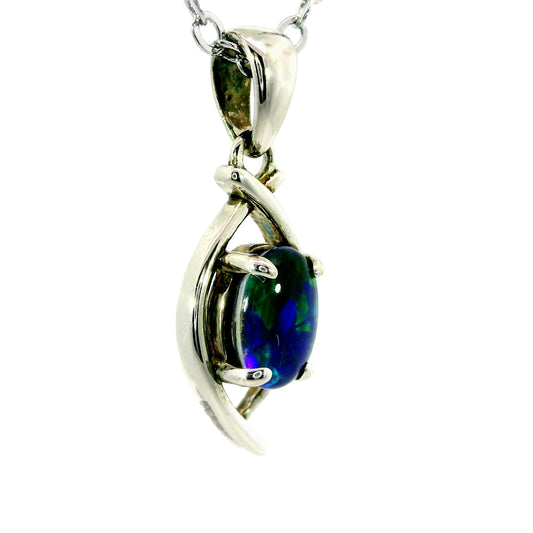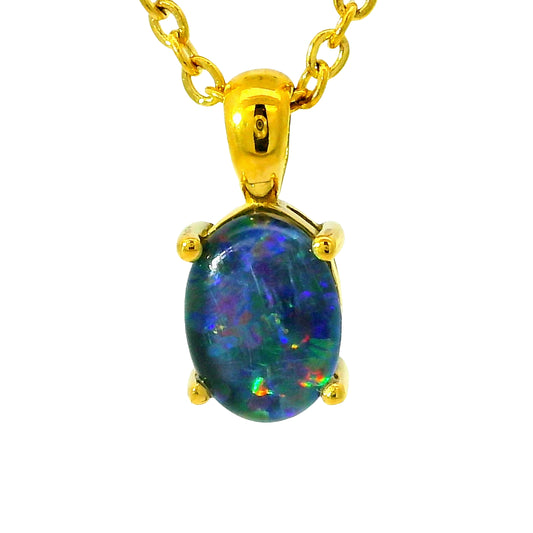"Holding a Rainbow" - A Guide to Opal Patterns
Have you ever gazed at a rainbow and felt the irresistible desire to hold it? The vibrant colours beckon, inviting you to wrap yourself in their beauty. Rainbows are undeniably a spectacular phenomenon, but did you know it was actually possible to wear one? Incredibly, rainbow's are found naturally occuring within Australia's national gemstone, the opal. This is the only known instance on earth where the formation of a rainbow is replicated within a gemstone. Other gemstones depend on faceting (which is the case for diamonds), or treatment processes to stabilise or even re-create the rainbow colours.
A rainbow is formed in the sky when water, air, and light combine to filter sunlight, splitting it into the colours of the spectrum and creating the iconic arch. In extremely rare instances, these same water molecules enter the earth's soil, bonding to naturally forming silica, hardening over time to create what we know today as 'opal'. Opals are known for their shifting colours and patterns, but did you know that these are directly influenced by how the opal was formed? This is why, when compared to something as structured as rainbows, opals are so incredibly unique. In fact, no two opals will ever be identical!
Over the years, opal enthusiasts have seen such a vast array of these stunning stones that they have started to identify and name specific patterns that appear frequently. These 'named patterns' help in describing the unique characteristics of opals, allowing collectors and jewellers to communicate more effectively about the opals they wish to buy and sell.
Named opal patterns are those that are very clear and distinct, and they can "change" or "move" depending on how the light hits the stone and how you angle it while viewing. Opal patterns are only referred to by specific names when they can be observed consistently across multiple gemstones in real-time.
Opal rainbows are varied with a myriad of different 'named' patterns, as throughout the years, there have been instances of recognisable shapes and hue structures.
|
Rolling Flash [1] |
Found where the colour ‘rolls’ across the opal. This can be seen in combination with other patterns, as it is mostly a name given to how the opals' colours interact with each other, rather than their physical position. |
|
Pinfire [3] |
A miraculous display of molecular consistency. Such a pattern is composed of small ‘specks’, mimicking a tiny galaxy within the opals surface. When the specks are seen as particularly small, the pattern may be recognised as the ‘moss pattern’. |
|
Harlequin Pattern [7] |
This pattern can be seen when blocks of colour form recognisable shapes, such as squares, trapezoids, rhombi, and diamonds. Finding something similar to this, or what could be described as a ‘checkerboard harlequin’ is incredibly rare, as the composition of opal is usually random and fragmented. |
|
Palette [4] |
This pattern is related to the Harlequin Pattern, and contains flashes of gem ‘fire’ in any colour on the rainbow spectrum. |
|
Floral [9] |
A repetitive yet freeform pattern, composed of small flecks of colour. This opal is quite impressive, as usually such a pattern allows for a wider amount of colours to be seen (and therefore compared) against one another. |
 Of course, such patterns are not ‘set in stone’, as opals themselves are untamable feats of nature. This is where the ‘Mixed Pattern’ can be introduced. As the name suggests, this opal will have colours forming in patterns that resemble multiple of the patterns listed above. This phenomenon is quite unusual, as although opals are unpredictable, the names given to their patterns are based on human-made observations, created from centuries of observing these precious gems. Even still, the possibility of discovering something undocumented is never zero.
Of course, such patterns are not ‘set in stone’, as opals themselves are untamable feats of nature. This is where the ‘Mixed Pattern’ can be introduced. As the name suggests, this opal will have colours forming in patterns that resemble multiple of the patterns listed above. This phenomenon is quite unusual, as although opals are unpredictable, the names given to their patterns are based on human-made observations, created from centuries of observing these precious gems. Even still, the possibility of discovering something undocumented is never zero.












































































































